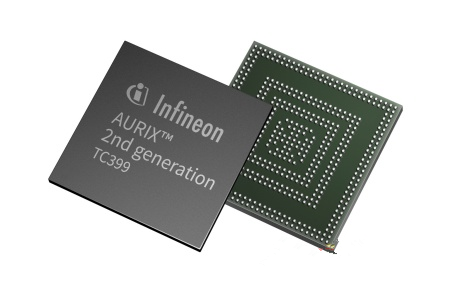Location: 联系我们客服-果博东方公司联系电话18108888862 » News » Infineon AURIX TC3xx series of power-assisted automatic driving and electric transport development
NewsContact Us
|
Infineon AURIX TC3xx series of power-assisted automatic driving and electric transport development2016-10-30 11:48 联系我们客服-果博东方公司联系电话18108888862
Infineon Technologies AG has announced a new generation of AURIX microcontrollers, the TC3xx, which is the most integrated device on the market, with triple the real-time performance of today's devices, to meet the market demand for autopilot and electric vehicles .
The AURIX TC3xx's high-performance six-core architecture, along with advanced features such as interconnect, encryption and embedded security, make it ideal for a wide range of automotive applications. Automotive drive applications include not only engine management and drive control, but also new electric drive systems and hybrid systems. Specifically, hybrid control, variable frequency control, battery management and DCDC converters will all benefit from this new product family. Not only that, AURIX TC3xx microcontroller can also be used for airbags, brakes, power steering, and the use of radar or camera technology, sensor systems and other security-critical applications. Excellent performance combined with a robust security architecture makes the TC3xx family ideal for professional controller applications and data fusion applications that will provide strong support for autopilot applications.
 "The AURIX TC3xx family of devices will drive the development of autopilot and electric vehicles," said Peter Schaefer, vice president and general manager of Infineon's controller business unit. "We are proud to introduce a new generation of high-performance multicore microcontrollers, Standards, and its performance, encryption and security functions are all in line with ISO 26262 ASIL-D system requirements.
AURIX TC3xx with outstanding performance, interconnectivity and security
The AURIX TC3xx family of devices offers state-of-the-art memory scalability (up to 16MB of flash memory and more than 6MB of integrated RAM). Compared to existing AURIX TC2xx microcontrollers equipped with up to three TriCore ™ cores, the TC3xx multicore microcontroller is equipped with up to six cores, each with a clock frequency up to 300MHz. Among them, four kernel with additional lock-step kernel, to ensure that integrated devices with ISO26262 functional security required more computing power. Its computing power of up to 2400DMIPS, much higher than the previous generation AURIX architecture 740DMIPS, can support ASIL-D automotive applications.
 A new generation of AURIX performance, and the re-use of existing safety concepts, enables automotive system suppliers to reduce development costs by 20%, while reducing time to market. The MCU can achieve the drive control, chassis control, and a new generation of radar and fusion algorithms and other rich features.
From blind spot monitoring to advanced radar systems such as radar, will benefit from the AURIX TC3xx. It can be equipped with two dedicated 300MHz signal processing unit of the radar processing subsystem, which in a single chip to achieve a new generation of radar algorithms. In addition, the radar chip can be seamlessly interconnected with AURIX through a fast radar interface.
AURIX TC3xx in the information security unambiguous. All models of the product line are equipped with a new programmable hardware security module (HSM), can support more secure vehicle communication, the protection of the vehicle from the hardware control and lead to steering control. In addition, HSM hardware integrates a new asymmetric encryption accelerator to help achieve full EVITA support. AURIX TC3xx can also help to achieve air software upgrades, from software hijacking and other threats.
The AURIX TC3xx microcontroller supports the latest communication interfaces such as Gigabit Ethernet and provides up to 12 CAN-FD channels compliant with ISO11898-1 and 24 LIN channels for the gateway and remote communication systems. Additional eMMC interfaces for external flash memory interfaces create the conditions for local data storage that supports over-the-air software upgrades.
|




